You found our list of top communication books for work.
Communication books are guides that teach skills and strategies for having successful conversations in the workplace. These references cover topics like body language, empathy, diplomacy, and listening. The purpose of these books is to improve communication skills and teamwork.
These guides are a type of team building book and are similar to books on conflict resolution, problem solving books, and negotiation books.
This list includes:
- business communication books
- communication skills books
- workplace communication books
- communication books for leaders
- books about public speaking
Here we go!
List of communication books
Here is a list of books about communication to improve conversations in the workplace.
1. Crucial Conversations: Tools for Talking When Stakes Are High by Kerry Patterson, Joseph Grenny, Ron McMillan, and Al Switzler
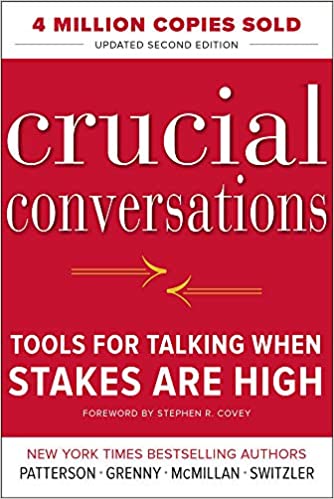
Crucial Conversations is a guide for communicating in tense situations. The book urges speakers to create dialogues where both parties feel safe speaking and try to hear each other out. The authors explain how to navigate fraught discussions with grace, compassion, and skill, and relay tips and strategies for steering the talk towards peaceful resolution. The book shows readers how to stay in control of their own emotions, persuade without pressuring, and use a solutions-centered tone. Later chapters even touch on
Notable Quote: “People who are skilled at dialogue do their best to make it safe for everyone to add their meaning to the shared pool–even ideas that at first glance appear controversial, wrong, or at odds with their own beliefs. Now, obviously they don’t agree with every idea; they simply do their best to ensure that all ideas find their way into the open.”
Read Crucial Conversations.
2. Simply Said: Communicating Better at Work and Beyond by Jay Sullivan
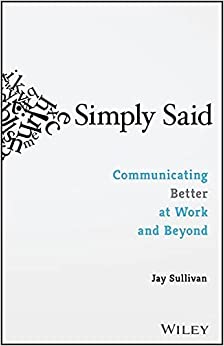
Simply Said is one of the best workplace communication books. Jay Sullivan outlines the rules of business communication and shows professionals how to optimize conversations. The book explores best practices for written and oral communication, as well as communication in team and leadership environments. Covered topics include how to structure messages, use clear wording, consciously incorporate body language, give and respond to feedback, and guide meetings. The book explores office communications in several forms, and strips the practice of communicating down to bare basics. Simply Said is one of the most helpful handbooks for corporate communication.
Notable Quote: “If we put the focus on what the other person is trying to gain from the exchange, we will do a better job communicating, because we will select more pertinent information, drill down to the desired level of detail, and make the information we are sharing more accessible to our audience.”
Read Simply Said.
3. Words That Work: It’s Not What You Say, It’s What People Hear by Dr. Frank Luntz
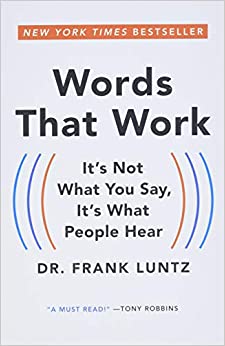
Words That Work is a guide to phrasing. The main thread of the book is that it is the interpretation, not the intention, that matters most in communication. The book explores common pitfalls that lead to misunderstanding, shows how to choose words carefully, and teaches readers how to be more masterful in messaging. Special sections present ten golden rules for language as well as corporate and political case studies that show how words can be misconstrued. Words That Work provides a blueprint for conveying the proper meaning and being understood in discussion. This book explains the responsibility of phrasing thoughts with care and shows how to deliver messages in the most effective manner possible.
Notable Quote: “Those who define the debate will determine the outcome.”
Read Words That Work.
4. The Fine Art of Small Talk: How To Start a Conversation, Keep It Going, Build Networking Skills — and Leave a Positive Impression! By Debra Fine
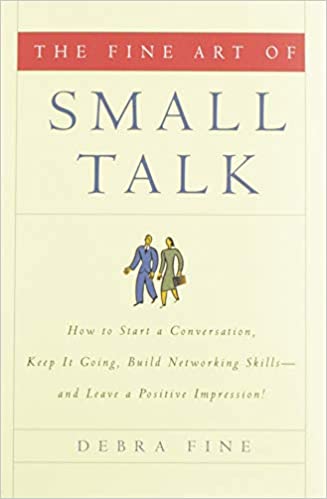
The Fine Art of Small Talk offers a crash course in having casual conversations. The book breaks down ways to start, maintain, and end conversations, with an emphasis on ways to keep the talk lively and engaging. Debra Fine gives advice on how to make meaningful connections and leave positive impressions by practicing and improving conversational skills. The end of the book covers how to leverage small talk in specific situations such as networking events or holiday parties. The guide has many practical applications in the workplace, including bonding with coworkers and establishing a rapport with clients. While many communication books focus on navigating high-stakes discussions, The Fine Art of Small Talk shows that less-formal chats can be just as impactful.
Notable Quote: “No matter what your chosen topic of conversation, I cannot overstate the importance of being authentic when talking with someone. If you are not genuinely interested in what the other person is saying, no amount of planning or preparation will save you from a doomed conversation. Interest in someone else cannot be feigned.”
Read The Fine Art of Small Talk.
5. Communication Skills Training: A Practical Guide to Improving Your Social Intelligence, Presentation, Persuasion and Public Speaking by Ian Tuhovsky
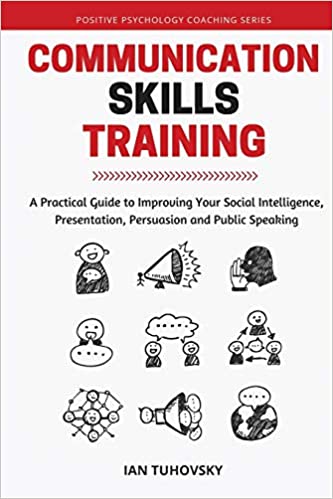
Communication Skills Training is one of the most helpful communication skills books. The guide provides a practical toolkit for boosting emotional intelligence and conversational skills. Pages cover topics such as expressing anger productively, fixing conversations that go awry, remaining unfettered and coming up with quick responses, and predicting reactions. The book covers the full gambit of communicational topics, and gives readers practical advice for any potential situation. The pages are full of sample dialogues to illustrate the points, as well as easy instructions, such as lists of phrases to avoid along with better substitutions. Communication Skills Training is a comprehensive handbook for communicating effectively in any circumstance that is full of actionable advice and not simply theory.
Notable Quote: “What can I do even better, more efficiently, differently and more effectively?”
Read Communication Skills Training.
6. Just Listen: Discover the Secret to Getting Through to Absolutely Anyone by Mark Goulston by Ian Tuhovsky
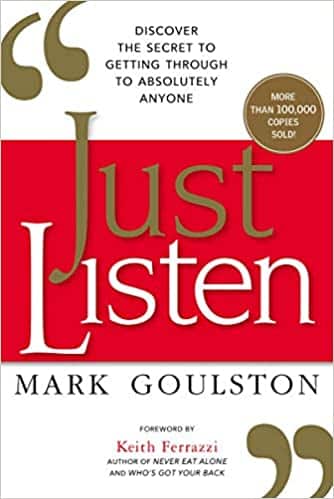
Just Listen is one of the best communication books for leaders. The authors insist that hearing others is often the key to being heard. The pages show professionals how to identify feelings and motivations, validate the speaker, and deal with challenging people and situations with patience and skill. The guide provides frameworks such as “the 9 core rules to get through to anyone” and “tools for achieving buy-in and getting through,” to help conversation leaders overcome skepticism and defensiveness and find common ground. Just Listen stresses the importance of listening, context, and clue-gathering in communication and shows readers strategies for having healthier dialogues.
Notable Quote: “So when you encounter problem people, realize that there’s a reason they’re behaving the way they do…. Open your own mind and look for the reasons behind the behavior, and you’ll take the first step toward breaking down barriers and communicating with an “impossible” person.”
Read Just Listen.
7. Fierce Conversations: Achieving Success at Work and in Life One Conversation at a Time by Susan Scott
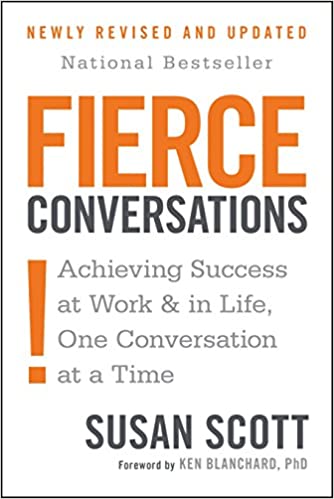
Fierce Conversations is a guide for having more authentic and impactful conversations. The book teaches readers how to leverage communication to achieve positive change, and shows that success is the result of a series of productive conversations. Susan Scott delivers motivational sentiments along with actionable advice on how to wield silence as a tool, take accountability for emotional outbursts, and advocate for priorities. Fierce Conversations provides a roadmap for standing ground in discussions and talking more triumphantly.
Notable Quote: “Our work, our relationships, and our lives succeed or fail one conversation at a time. While no single conversation is guaranteed to transform a company, a relationship, or a life, any single conversation can. Speak and listen as if this is the most important conversation you will ever have with this person. It could be. Participate as if it matters. It does.”
Read Fierce Conversations.
8. Digital Body Language: How to Build Trust and Connection, No Matter the Distance by Erica Dhawan
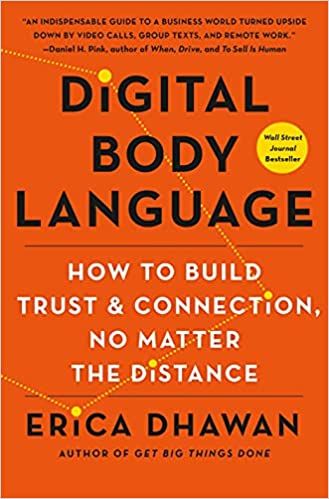
Digital Body Language is an instructional manual for reading cues in online conversations. This guide explains how to read reactions and build trust from behind a screen. The pages outline which communication tools to use in certain situations, and show how to communicate thoughtfully and professionally on any platform. Erica Dhawan also touches on how to digitally bridge differences like gender, generational divide, and culture. Digital Body Language is a valuable reference for communicating while working remotely.
Notable Quote: “The loss of nonverbal body cues is among the most overlooked reasons why employees feel so disengaged from others. If used properly, and at scale, empathetic body language equals employee engagement. Disengagement happens not because people don’t want to be empathetic but because with today’s tools, they don’t know how.”
Read Digital Body Language, and check out this guide to virtual meeting etiquette.
9. Talk Like TED: The 9 Public-Speaking Secrets of the World’s Top Minds by Carmine Gallo
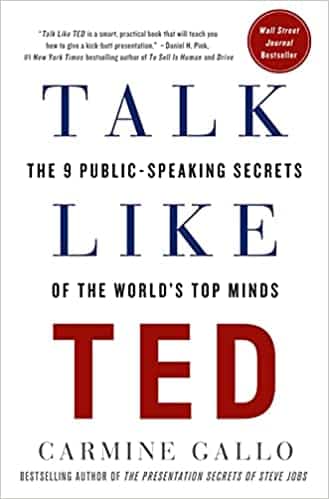
Talk Like TED is one of the best books about public speaking. Carmine Gallo analyzes hundreds of TED talks to determine what qualities make speeches and speakers most memorable. The book lays out nine best practices that lead to compelling presentations, such as appealing to multiple senses, educating the audience, delivering delightful surprises, and being brief. Talk Like TED is a written workshop in the art of storytelling that can help professionals elevate presentations.
Notable Quote: “Science shows that passion is contagious, literally. You cannot inspire others unless you are inspired yourself. You stand a much greater chance of persuading and inspiring your listeners if you express an enthusiastic, passionate, and meaningful connection to your topic.”
Read Talk Like TED.
10. Say What You Mean: A Mindful Approach to Nonviolent Communication by Oren Jay Sofer

Say What You Mean is the ultimate guide for having mindful and meaningful conversations. Oren Jay Sofer explores the unconscious habits and patterns that many talkers fall into and shows readers how to break away from autopilot discussions and speak with intention. This guide emphasizes how to maintain focus, avoid ambiguity, and reduce anxiety when having discussions. The text shows how to be blunt yet compassionate and proves that conversational clarity does not have to come at the sake of humanity.
Notable Quote: “To listen entails a fundamental letting go of self-centeredness. We have to be willing to put down our own thoughts, views, and feelings temporarily to truly listen.”
Read Say What You Mean.
11. We Need to Talk: How to Have Conversations That Matter by Celeste Headlee
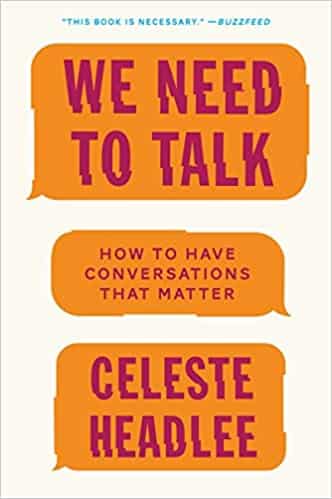
Inspired by a highly-popular TED talk, We Need to Talk gives guidance on navigating important conversations. Celeste Headlee shows readers how to be fully present in conversations, take a nonjudgmental approach, avoid repetition and fluff, and get to the heart of the matter. The book frames conversation as a survival skill, and teaches speakers how to master the art. We Need to Talk shows readers how to stop multitasking and assuming, mine discussion for important information, and ensure that critical messages get heard.
Notable Quote: “In order to have important conversations, you will sometimes have to check your opinions at the door. There is no belief so strong that it cannot be set aside temporarily in order to learn from someone who disagrees. Don’t worry; your beliefs will still be there when you’re done.”
Read We Need to Talk.
12. Difficult Conversations: How to Discuss What Matters Most by Douglas Stone, Bruce Patton, and Sheila Heen
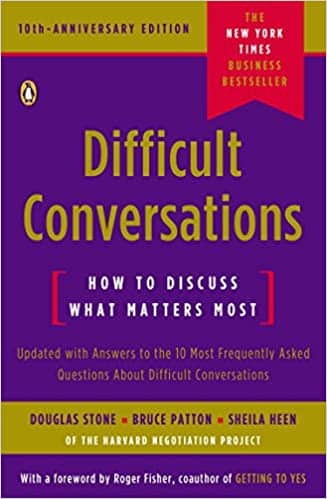
Difficult Conversations is a handbook for communicating in high-pressure situations. Drawing on expertise gained from The Harvard Negotiation Project, the authors outline best practices for guiding emotionally-charged discussions. The text gives tips on disarming defensiveness, identifying underlying meaning, and transitioning the talk from emotion to solutions. The book identifies and analyzes different types of difficult conversations and explores the nuances of the circumstances surrounding discussions. Difficult Conversations is a valuable toolkit for any professional who needs to speak about tricky topics or communicate with difficult people.
Notable Quote: “Often we go through an entire conversation – or indeed an entire relationship – without ever realizing that each of us is paying attention to different things, that our views are based on different information.”
Read Difficult Conversations.
13. HBR Guide to Better Business Writing by The Harvard Business Review

HBR Guide to Better Business Writing is one of the top business communication books. This practical guide teaches readers how to draft correspondence such as emails, letters, memos, and reports. The book shows how to write professional, persuasive, and powerful messages that achieve objectives. The chapters explore fundamentals like conveying a clear message, summarizing and emphasizing key points, following grammatical conventions, and making the best use of limited space. The guide also provides a formula for the writing process. HBR Guide to Better Business Writing is a masterclass in writing for work that can help professionals at any level sharpen their skills.
Notable Quote: “Many people begin writing before they know what they’re trying to accomplish. As a result, their readers don’t know where to focus their attention or what they’re supposed to do with the message. So much depends on your purpose in writing that you must fix it firmly in your mind. What do you want the outcome to be?”
Read HBR Guide to Better Business Writing.
14. Talking to Strangers: What We Should Know about the People We Don’t Know by Malcolm Gladwell
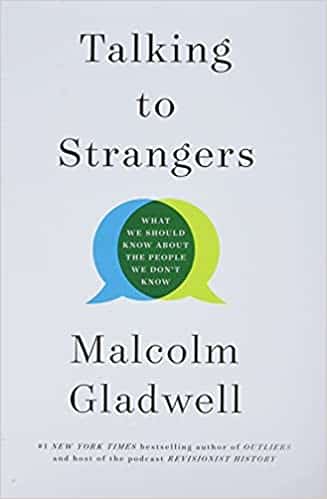
Talking to Strangers is an exploration of the conclusions we make about strangers, and the ways these judgments influence our interactions. The book is a fascinating case study of assumption and interpersonal conflict. In Malcolm Gladwell’s typical style, the book presents a series of case studies from contemporary history and explores the underlying psychology and elements that underscore a series of events. The book shows how the initial ideas we form about strangers can enable the other party’s actions and guide our own behavior. Reading the other person is a large part of communication, and Gladwell exposes just how often we misread conversation partners, and the results that can come as a result of these misunderstandings. Talking to Strangers is a helpful aid for overcoming bias and attempting more honest communication.
Notable Quote: “The conviction that we know others better than they know us—and that we may have insights about them they lack (but not vice versa)—leads us to talk when we would do well to listen and to be less patient than we ought to be when others express the conviction that they are the ones who are being misunderstood or judged unfairly.”
Read Talking to Strangers.
15. The Art of Communicating by Thich Nhat Hanh
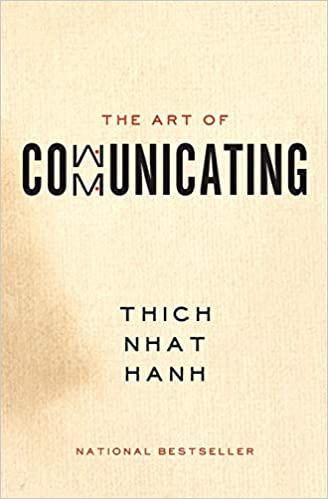
The Art of Communicating is a guide to compassionate conversation. Monk and mindfulness expert Thich Nhat Hanh covers topics such as self-talk, empathetic listening, and mindful communication at work. The strategies and best practices in the book aim to help individuals have more meaningful conversations that spark and strengthen authentic connections. Several chapters focus on workplace conversation and how to avoid negative and toxic discussions both internally and externally. As the modern workforce calls for increasing levels of humanity in the corporate world, The Art of Communicating is a valuable resource for professionals craving more sincere, kind, and open discussion.
Notable Quote: “Once you can communicate with yourself, you’ll be able to communicate outwardly with more clarity. The way in is the way out.”
Read The Art of Communicating.
Final Thoughts
Communication is one of the most important parts of business, yet many professionals struggle with the art. The practice is about more than exchanging words and information. Workplace communication is about delivering messages in concise and compelling ways and getting listeners onboard. Books about communication can help readers avoid misunderstandings, capture and hold attention, and be more confident when speaking in the workplace. These guides improve teamwork and help professionals achieve more positive outcomes in conversations.
For more book suggestions, check out this list of focus books, and this list of communication games and activities.
We also have a list of the best ways to increase empathy at the office.
